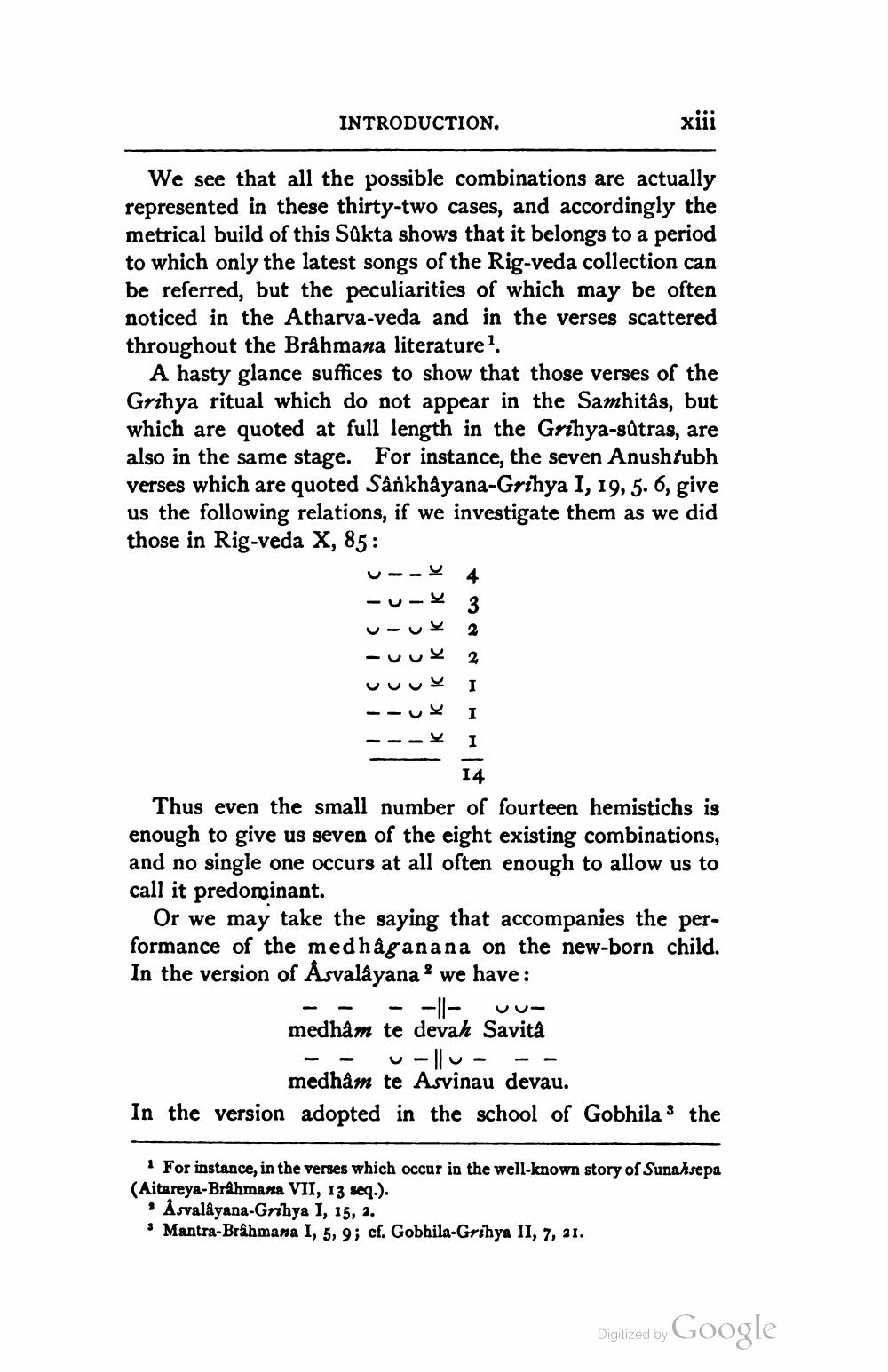________________
INTRODUCTION.
xiii
We see that all the possible combinations are actually represented in these thirty-two cases, and accordingly the metrical build of this Sakta shows that it belongs to a period to which only the latest songs of the Rig-veda collection can be referred, but the peculiarities of which may be often noticed in the Atharva-veda and in the verses scattered throughout the Brahmana literaturel
A hasty glance suffices to show that those verses of the Grihya ritual which do not appear in the Samhitâs, but which are quoted at full length in the Grihya-sútras, are also in the same stage. For instance, the seven Anushtubh verses which are quoted Sankhayana-Grihya I, 19, 5. 6, give us the following relations, if we investigate them as we did those in Rig-veda X, 85:
KKKK KKK
14 Thus even the small number of fourteen hemistichs is enough to give us seven of the eight existing combinations, and no single one occurs at all often enough to allow us to call it predominant.
Or we may take the saying that accompanies the performance of the medhåganana on the new-born child. In the version of Åsvalâyana ® we have:
- - - - 1 - vumedham te devah Savità
- - vlv- - -
medham te Asvinau devau. In the version adopted in the school of Gobhila s the
1 For instance, in the verses which occur in the well-known story of Sunah sepa (Aitareya-Brahmana VII, 13 seq.).
. Å svaldyana-Grihya I, 15, 2. • Mantra-Brahmana 1, 5, 9; cf. Gobhila-Grihya II, 7, 21.
Digilized by Google




